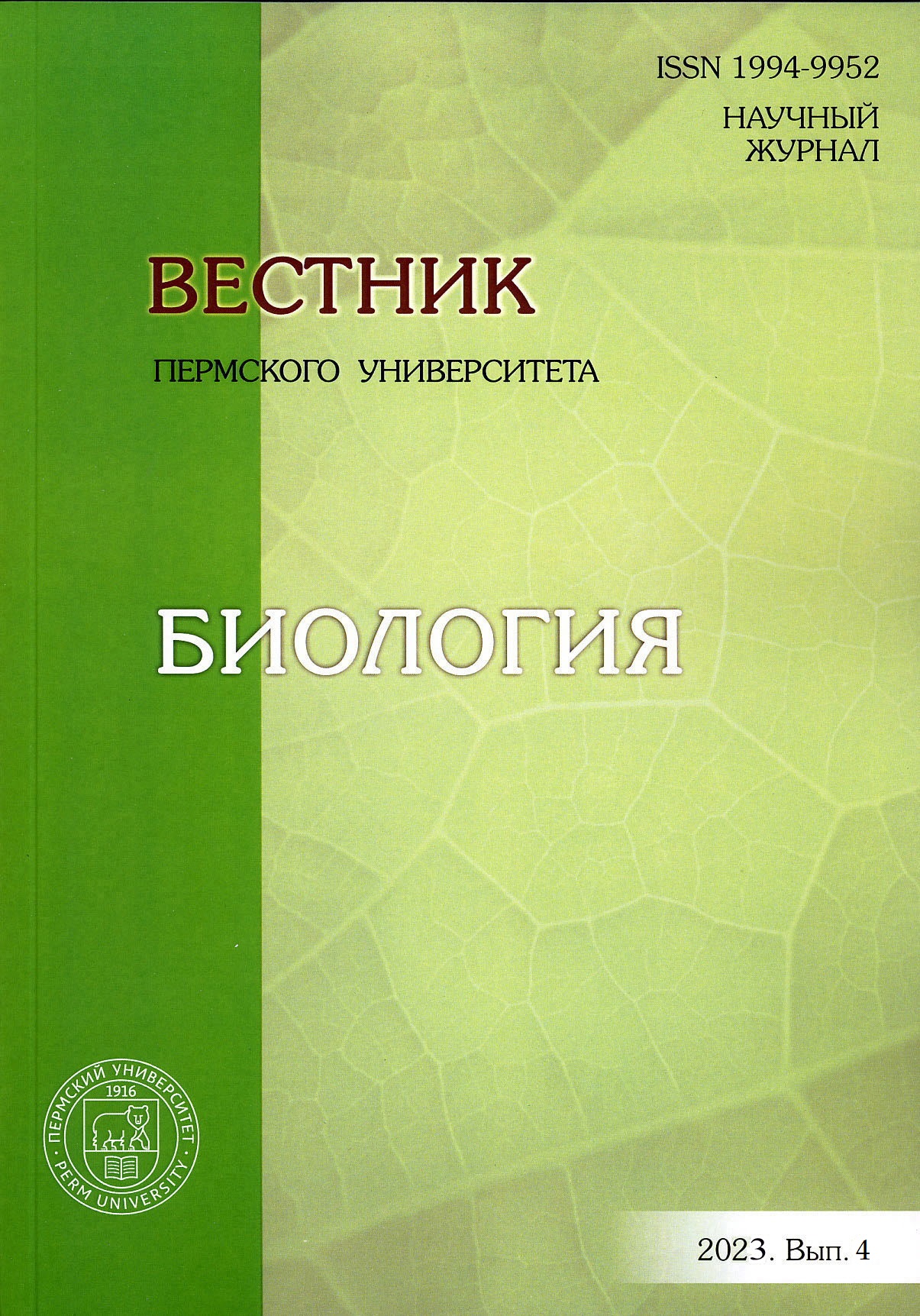Dibutyl phthalate degrading bacteria isolated from the rhizosphere of bluegrass (Poa pratensis L.)
Main Article Content
Abstract
Article Details
References
Бачурин Б.А., Одинцова Т.А. Стойкие органические загрязнители в отходах горного производства // Современные экологические проблемы Севера. Апатиты: Изд-во Кольского НЦ РАН. 2006. Ч. 2. С. 7–9.
Методы общей бактериологии / под ред. Ф. Герхардта и др. М.: Мир, 1983. Т. 1–3.
Нетрусов А.И. Практикум по микробиологии. М.: Академия, 2005. 608 с.
Chen F. et al. High-efficiency degradation of phthalic acid esters (PAEs) by Pseudarthrobacter defluvii E5: performance, degradative pathway, and key genes // Sci. Total Environ. 2021. Vol. 794. 148719.
Choi K.Y. et al. Molecular and biochemical analysis of phthalate and terephthalate degradation by Rho-dococcus sp. strain DK17 // FEMS Microbiol. Letters. 2005. Vol. 252. P. 207–213.
Eaton R.W. Plasmid-encoded phthalate catabolic pathway in Arthrobacter keyseri 12B // J. Bacteriol. 2001. Vol. 183. P. 3689–3703.
Jin D.-C. et al. Biodegradation of di-n-butyl phthalate by Rhodococcus sp. JDC-11 and molecular detec-tion of 3,4-phthalate dioxygenase gene // J. Microbiol. Biotechnol. 2010. Vol. 20(10). P. 1440–1445.
Kanaujiya D.K., Sivashanmugam S., Pakshirajan K. Biodegradation and toxicity removal of phthalate mixture by Gordonia sp. in a continuous stirred tank bioreactor system // Environmental Technology & Innova-tion. 2022. Vol. 26. 102324.
Kasai D. et al. 2,3-dihydroxybenzoate meta-cleavage pathway is involved in o-phthalate utilization in Pseudomonas sp. strain PTH10 // Scientific Reports. 2019. Vol. 9. 1253.
Li Y.W. et al. Plant uptake and enhanced dissipation of di(2-ethylhexyl) phthalate (DEHP) in spiked soils by different plant species // International Journal of Phytoremediation. 2014. Vol. 16. P. 609–620.
Liang D.-W. et al. Phthalates biodegradation in the environment // Appl. Microbiol. Biotechnol. 2008. Vol. 80. P. 183–198.
Liao C.S., Nishikawa Y., Shih Y.T. Characterization of di-n-butyl phthalate phytoremediation by garden lettuce (Lactuca sativa L. var. longifolia) through kinetics and proteome analysis // Sustainability. 2019. Vol. 11. P. 1–16.
Randika J.L.P.C. et al. Bioremediation of pesticidecontaminated soil: a review on indispensable role of soil bacteria // The Journal of Agricultural Sciences – Sri Lanka. 2022. Vol. 17(1). P. 19–43.
Raymond R.L. Microbial oxidation of n-paraffinic hydrocarbons // Develop. Ind. Microbiol. 1961. Vol. 2(1). P. 23–32.
Stanislauskiene R. et al. Analysis of phthalate degradation operon from Arthrobacter sp. 68b // Biologi-ja. 2011. Vol. 57(3). P. 45–54.
Vamsee-Krishna C., Phale P.S. Bacterial degradation of phthalate isomers and their esters // Indian J. Microbiol. 2008. Vol. 48. P. 19–34.
Wenzel W.W. Rhizosphere processes and management in plant-assisted bioremediation (phytoremedia-tion) of soils // Plant & Soil. 2009. Vol. 321. P. 385–408.
Wu K. et al. Responses of soil microbial community and enzymes during plant-assisted biodegradation of di-(2-ethylhexyl) phthalate and pyrene // International Journal of Phytoremediation. 2019. Vol. 21(7). P. 683–692.
Zhang Y. et al. Effect of di-n-butyl phthalate on root physiology and rhizosphere microbial community of cucumber seedlings // Journal of Hazardous Materials. 2015. Vol. 289. P. 9–17.
